Early Prisons
The prison has a very long history. A well known early example of its use, described in the Bible's Book of Genesis, describes the imprisonment of Joseph (he of the coat of many colours) in the fifteenth century BC.
In England, by the time of the King Alfred in the ninth century, a spell in prison had begun to be used for a few offences such as theft, oath-breaking, and witchcraft, with sentences typically ranging from 40 to 120 days, perhaps accompanied by a fine. However, up until the nineteenth century, prison was largely not used as a punishment in itself but as place for holding someone until their trial or, if they were found guilty, until a punishment carried out. Depending on the offence, the punishment could be financial such as a fine or forfeiture of property, or it it could be death by various means, or take the form of bodily mutilation, or public humiliation, such as being placed in the pillory or stocks.
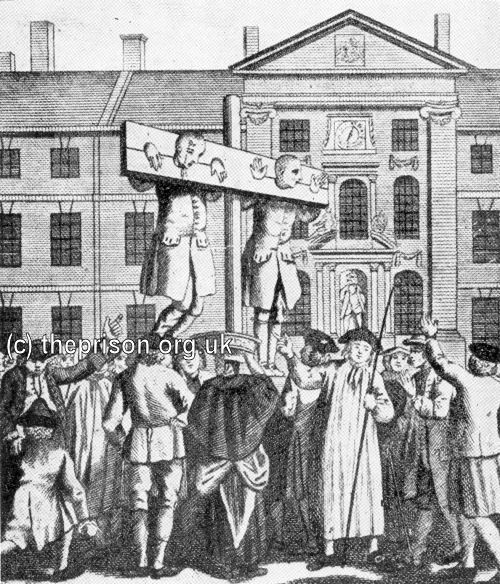
The Pillory.
Some of the earliest prisons were set up by the Crown. Pre-eminent among these was the Tower of London, whose construction was begun by William the Conqueror, and which was used for the most high-ranking prisoners, particularly those accused of high treason.
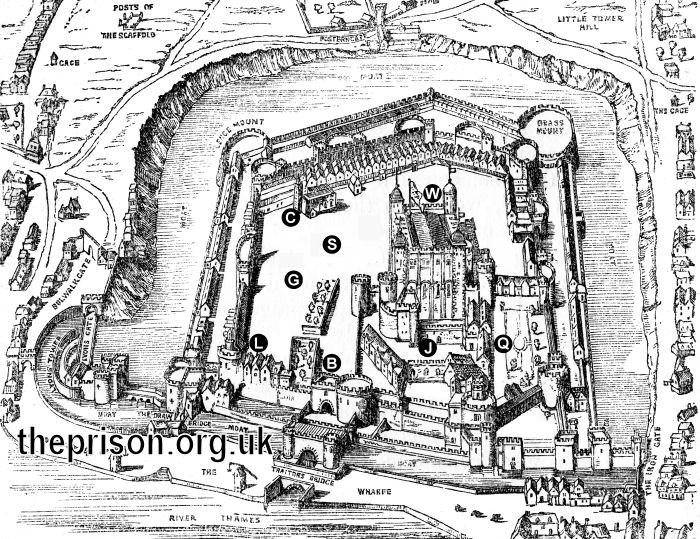
Tower of London in the 19th century.
Another Crown prison was the Fleet Prison, also dating from the eleventh century. It was originally used to hold offenders against the state, but later housed debtors and bankrupts.
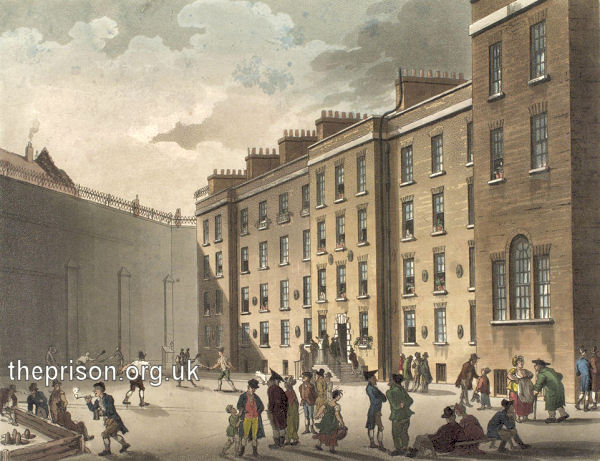
Fleet Prison, City of London, c.1808.
During the twelfth and thirteenth centuries, the use of prisons became more common, particularly after Henry II issued the Assize of Clarendon. The Act required the Sheriff in each county to set up county gaols funded by the Crown, where alleged offenders were detained until the next Quarter Sessions when a circuit judge would visit and deal with them all — a process known as gaol delivery. Many county gaols were set up in the castles that often existed in county towns. Increasingly, other large towns set up their gaols, with castles or town gatehouses being popular locations.
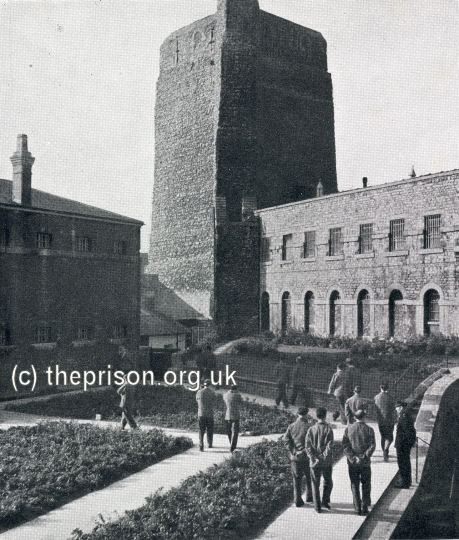
Oxford County Gaol, 1950s.
The use of imprisonment for debtors to the Crown, which began in 1178, was extended to all debtors in 1352. Their detention ended as soon as the debtor had cleared their debts. Between the thirteenth and sixteenth centuries, a gaol term, typically ranging from forty days to a year and a day, became the penalty for a number of other offences including seditious slander, corruption, selling shoddy or underweight goods, and prostitution and brothel-keeping.
Not all prisons were operated by the civil authorities. The stannary courts at Lydford in Devon and Lostwithiel in Cornwall judged cases involving tin-miners and had their own prisons. In the royal forests, which in the medieval period numbered eighty and covered three tenths of England, 'forest law' applied. Forest law prohibited not only unauthorised hunting, but activities such as felling trees, cutting peat or even — in some cases — collecting firewood. Penalties for offenders included fines and imprisonment, with forest prisons being set up in 1361 at Lyndhurst in Hampshire, and in 1446 at Clarendon Palace in Wiltshire.

Lydford Castle, home of Devon stannary courts and prison.
A number of prisons were also established by the church and religious communities. In 1107, construction began of a new palace, chapel and two prisons (one for men and one for women), on land owned by the Bishop of Winchester in Southwark, the area later becoming known as the Liberty of the Clink. In 1161, the Bishop gained the right to license brothels and prostitutes in the Liberty, and could imprison non-compliers. In 1332, the Archbishop of York erected a large gaol at Hexham, used to hold transgressors from his estates in the ecclesiastical Liberty of Hexhamshire. The Bishop of London maintained a prison within the precincts of St Paul's Cathedral. Monasteries and abbeys often included a prison amongst their buildings. At Fountains Abbey, three cells were constructed in the basement of the abbot's house.

Remains of prison cells at Fountains Abbey, Yorkshire. © Peter Higginbotham
Another important type of prison, known as a bridewell or 'house of correction' appeared in the latter half of the sixteenth century. It was used to detain individuals who had fallen foul of the poor laws or vagrancy laws, for example by begging on the street or refusing to work in return for poor relief. Bridewells were set up by each county and by many individual towns.
From the seventeenth century onwards, felons (the more serious offenders) were increasingly transported overseas, at first to America and then, from the 1780s, to prison colonies in Australia. In the mid 19th century, when Australia began closing its doors on this system, government-run convict prisons were introduced, which combined solitary confinement with hard labour. They included Millbank, and .
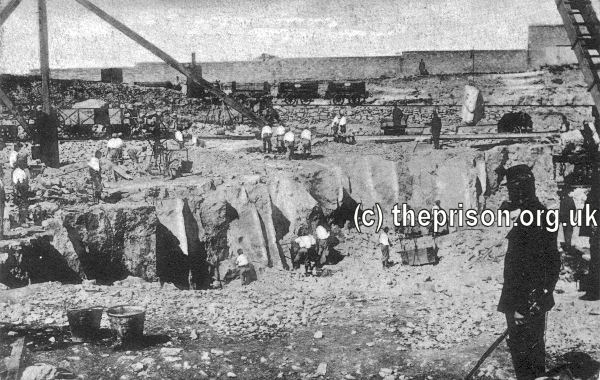
Prisoners working in quarries at Portland, early 1900s. © Peter Higginbotham
The nationalisation of the prison system in 1878 led to a rationalisation of the coutry's prisons, with many establishments being closed.
Bibliography
- Higginbotham, Peter The Prison Cookbook: A History of the English Prison and its Food (2010, The History Press)
- Brodie, A. Behind Bars - The Hidden Architecture of England's Prisons (2000, English Heritage)
- Brodie, A., Croom, J. & Davies, J.O. English Prisons: An Architectural History (2002, English Heritage)
- Harding, C., Hines, B., Ireland, R., Rawlings, P. Imprisonment in England and Wales (1985, Croom Helm)
- McConville, Sean A History of English Prison Administration: Volume I 1750-1877 (1981, Routledge & Kegan Paul)
- Morris, N. and Rothman, D.G. (eds.) The Oxfod History of the Prison (1997, OUP)
- Pugh R.B. Imprisonment in Medieval England (1968, CUP)
Links
- Prison Oracle - resources those involved in present-day UK prisons.
- GOV.UK - UK Government's information on sentencing, probation and support for families.
Except where indicated, this page () © Peter Higginbotham. Contents may not be reproduced without permission.



